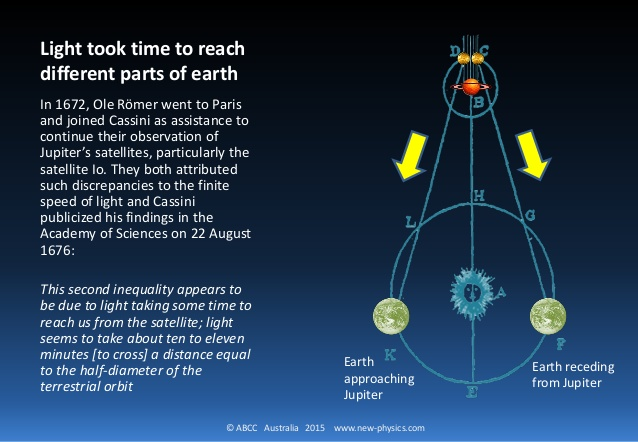
In 1674, Dutch astronomer Ole Rømer used eclipses of Jupiter’s satellites to make the first determination of the speed of light.
Rømer noted that the observed time interval between successive eclipses of a given moon was about seven minutes greater when the observations were carried out when Earth in its orbit was moving away from Jupiter than when it was moving toward Jupiter. He reasoned that, when the Earth was moving away from Jupiter, the observed time between eclipses was increased above the true value (by about 3.5 minutes) due to the extra distance that the light from each successive eclipse had to travel to reach Earth. Conversely, when Earth was moving toward Jupiter, the observed interval between eclipses was decreased (by about 3.5 minutes) because of the decreased distance that the light had to travel on each successive eclipse.
Had Earth not been moving, the light from successive eclipses would have to travel the same distance to Earth, so that the true interval between eclipses would be observed. However, when Earth was moving away from Jupiter, the light had to travel a greater distance to reach Earth from each successive eclipse, and conversely a smaller distance when Earth was moving toward Jupiter. Since the speed of Earth in its orbit was known, the distance that Earth had moved between eclipses could be calculated. The speed of light was then estimated to account for the seven minute overall variation of the observed interval between successive eclipses.
Rømer’s estimate for the speed of light was 140,000 miles/second, which is remarkably good considering the method employed.
Advertisements Like this:Like Loading... Related




